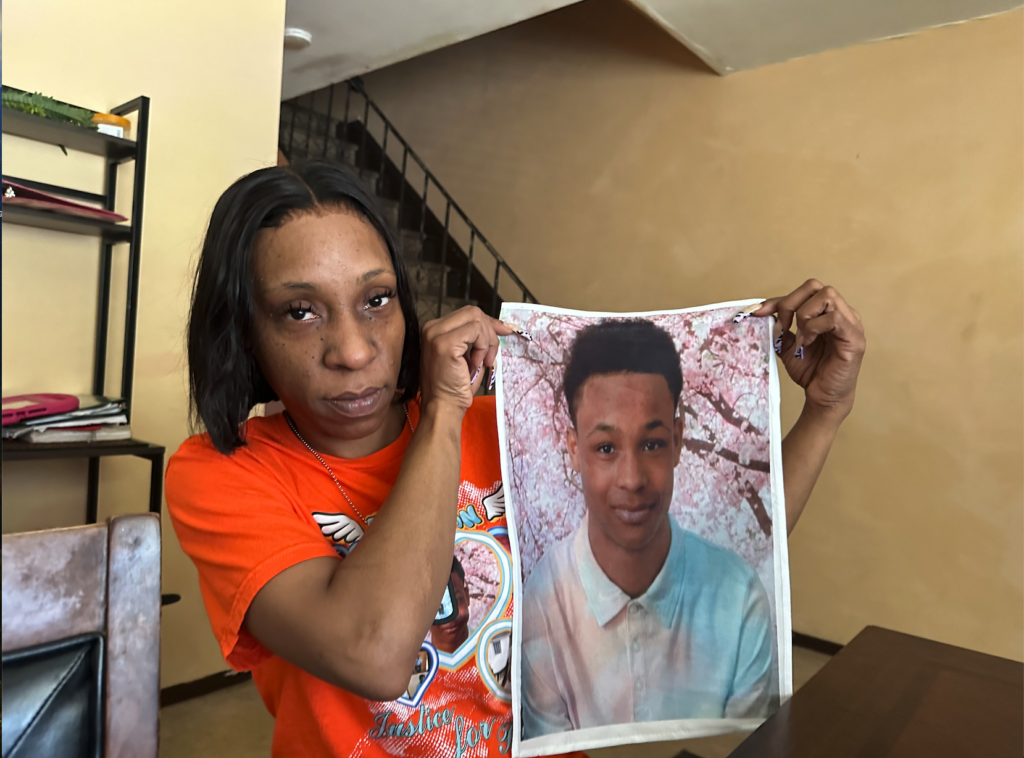Hope dims for flood help

BARBARAELLEN KOCH PHOTO
State Assemblyman Marc Alessi helps Calvary Baptist Church members deliver donated clothing and food to Linda Hobson’s home on Horton Avenue Friday afternoon. The next day, First Baptist Church of Riverhead hosted a meeting to push for federal aid for flood victims.
Rhonda King’s Osborn Avenue home was ruined by flooding earlier this year. She lost nearly all her possessions, including her daughter’s car, when she and her neighbors suddenly found themselves inundated by several feet of water.
Like flood victims throughout Riverhead Town and Suffolk County, Ms. King, whose landlord has since relocated her and her family elsewhere in Riverhead, has not received any insurance or federal disaster money. She instead has relied on donations from her church, friends and family to rebuild her life.
“I’m doing everything on my own,” she said.
That’s why Ms. King, other flood victims, local lawmakers and members of the Long Island Organizing Network, some 200 people in all, gathered at First Baptist Church of Riverhead Saturday morning. Their goal was to make another push for Federal Emergency Management Agency grants to help homeowners and municipalities recover from the devastating effects of the late March storm that dumped more than eight inches of rain in parts of Suffolk County.
“Ghandi said, ‘Be the change you want to see in the world,’ and that’s what we’re about,” said Shirley Coverdale, who sits on the Long Island Organizing Network’s board of directors and whose husband, the Rev. Charles Coverdale, is the pastor of First Baptist Church.
During the meeting, elected leaders from the town, county, state and federal levels signed a letter urging Governor David Paterson to seek federal funds to help both public and private recovery efforts and to finance a long-term solution for the flood-prone area.
But as the week unfolded, it appeared as if flood victims, many whose basements are still under water and whose walls are becoming infested with mold, might be fighting a losing battle.
State Emergency Management Office spokesman Dennis Michalski said Tuesday his office’s preliminary investigation found the region fell 70 homes short of FEMA’s guidelines, which require that 100 homes be destroyed in order for individual homeowners to qualify for assistance. “We are not meeting the threshold right now,” he said, though representatives from his agency have said that if enough homeowners come forward to report damage they could re-evaluate the initial assessment.
Mr. Paterson last month balked at ever asking for federal aid for individual residents because damage estimates didn’t meet the FEMA thresholds. Instead, he asked the Small Business Administration to make low-interest loans available to flood victims, which the agency agreed to do.
Though the SBA has already approved more than $400,000 in loans for Long Island residents, many local renters and homeowners live on limited fixed incomes and say they would not qualify for the loans.
Middle Island resident Stephany LaGalla, whose basement was flooded in March, said her homeowners insurance company refused to cover damages, though water gushing in through her windows destroyed her boiler and personal property.
She applied for an SBA loan, but did not qualify because she has too much debt. In the meantime, she has been staying with her son as her house remains uninhabitable.
The governor did ask FEMA to declare the March 29 storm and a nor’easter that blew through earlier that month a single-storm event, a move that would make local governments, though no individuals, eligible for federal assistance. Congressman Tim Bishop, who attended Saturday’s meeting, asked FEMA officials last week to expedite the governor’s request.
State Assemblyman Marc Alessi (D-Shoreham) said that while individual assistance is looking more unlikely, the towns and county government could apply for a mitigation grant to finance a long-term solution for flood-prone areas. Solutions could include elevating the land, creating better drainage systems and even using federal money to purchase flood-damaged homes, officials said.
“I think hazard mitigation is the only way to do this,” Mr. Alessi said. Local governments will not be able to apply for mitigation grants until after the disaster declaration is officially extended to include the late March storm. Mr. Michalski noted that local governments would have to pay 25 percent of the cost of any long-term projects.
But Ms. Coverdale and other flood victims say they are not ready to give up hope just yet.
Although state officials said the town and county numbers will likely fall far short of FEMA thresholds — even if both storms were to be combined — Ms. Coverdale said FEMA has made exceptions for low-income areas and the elderly. The guidelines are just that, she insisted, and are not written in stone.
Linda Hobson, a social worker whose Horton Avenue house was ruined by the storm and who has since become a community organizer, urged flood victims like Ms. King and Ms. LaGalla to report the damage to their town and county governments. “We need everyone,” she said, “but most of all, we need federal assistance.”








